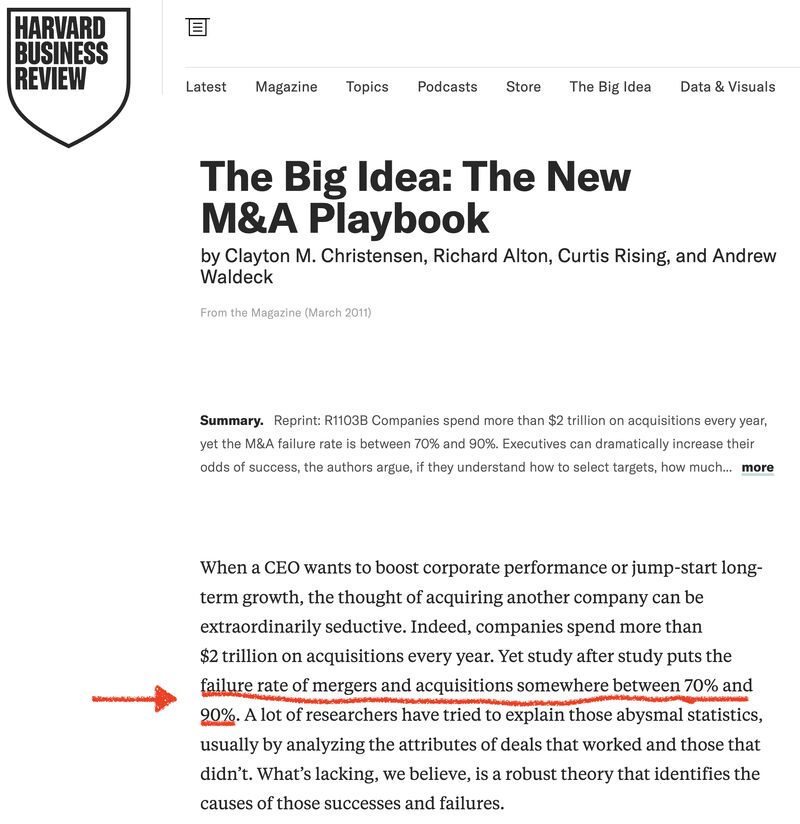- Dec 16, 2024
Most firm acquisitions fail before the ink dries. Here's why.
- Marc Howard
Here's my lesson from 13 years ago...
This weekend I was revisiting a 2011 Harvard Business Review article, The New M&A Playbook, and it felt like it was written for today’s accounting M&A market:

Here’s the core idea: every acquisition fits into one of two categories, and knowing the difference is critical.
1. Leverage My Business (LBM):
This type of deal is about improving operations.
You’re buying resources—clients, talent, or systems—that fit neatly into your existing model.
The playbook is to reduce costs or increase pricing power.
Example: A $10M regional firm acquires a $2M payroll service provider. The parent firm expects to fold in 500 payroll clients, streamline operations, and cut redundant staff.
What happens when client attrition is higher than expected? Or when incompatible systems lead to rework and delays?
LBM deals fail when firms overestimate synergies or underinvest in integration.
The key to success is clear: integration must be fast, frictionless, and focused.
2. Reinvent My Business (RBM):
This is where the game changes.
RBM acquisitions are about transformation not efficiency.
You’re not just buying resources; you’re buying an entirely new business model.
Example: A $10M tax-focused firm acquires a $3M virtual CFO practice specializing in SaaS companies.
The acquired firm is growing 40% year-over-year, driven by subscription-based revenue and an average client lifetime value of $60K.
The temptation is to merge everything. But that’s where many firms go wrong.
RBM acquisitions thrive when left alone. The new business model should operate independently, free from the processes and cost structures of the parent firm.
The $3M firm could grow to $10M in five years if left to run its course. But force it to adopt the parent firm’s slower billing cycles and manual reporting, and you risk cutting its growth in half.
RBM deals fail when firms try to integrate what should be kept separate.
The HBR article highlights a critical truth: the price you pay and the strategy you use should match the type of acquisition.
LBM deals are about squeezing efficiencies. You’re paying for predictable synergies. The payoff happens quickly or not at all.
RBM deals are about long-term growth. They often look “overpriced” because their value lies in the future.
Most failures happen because firms mix these strategies.
They overpay for synergies in an LBM deal or suffocate an RBM deal with forced integration.
My Take:
If you’re considering an acquisition, ask yourself two questions:
• Are we buying to scale or to transform?
• Should this firm be integrated or left independent?
An LBM deal should boost your current business within 12 months—or it’s not worth the price.
An RBM deal should chart an entirely new course for your firm.
If you don’t see disruptive growth potential, walk away.Title
NEW: Download the "Moneyball Method" to Grow Your Firm
Client Profitability Scorecard
Enter in your clients and the worksheet advises on which clients should be "benched", "traded" and who to keep in your starting line-up. It helps you fine tune your niche by finding similar "A" and "B" clients.